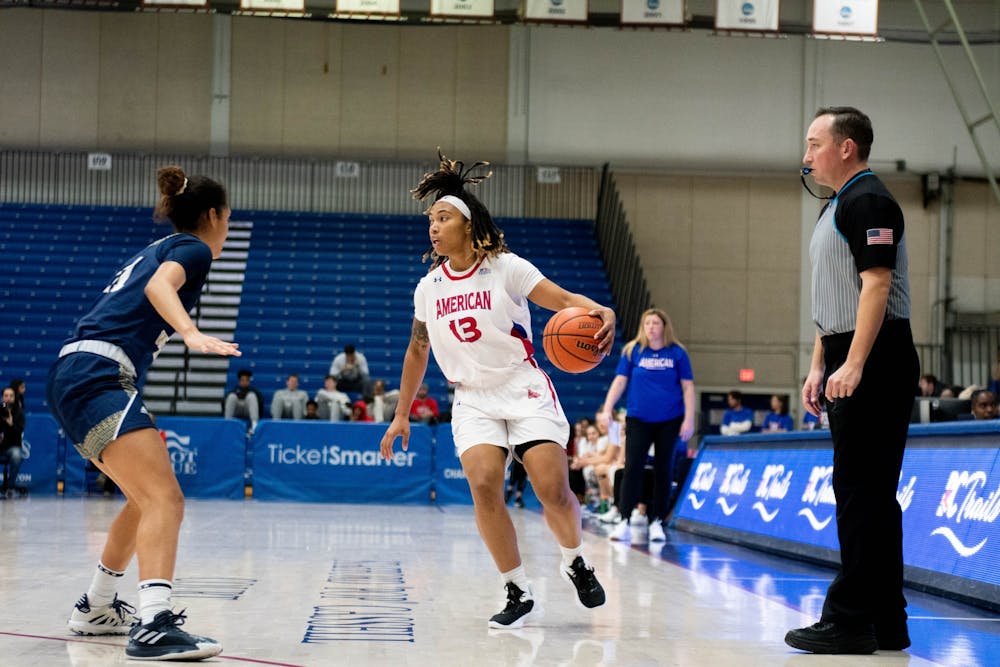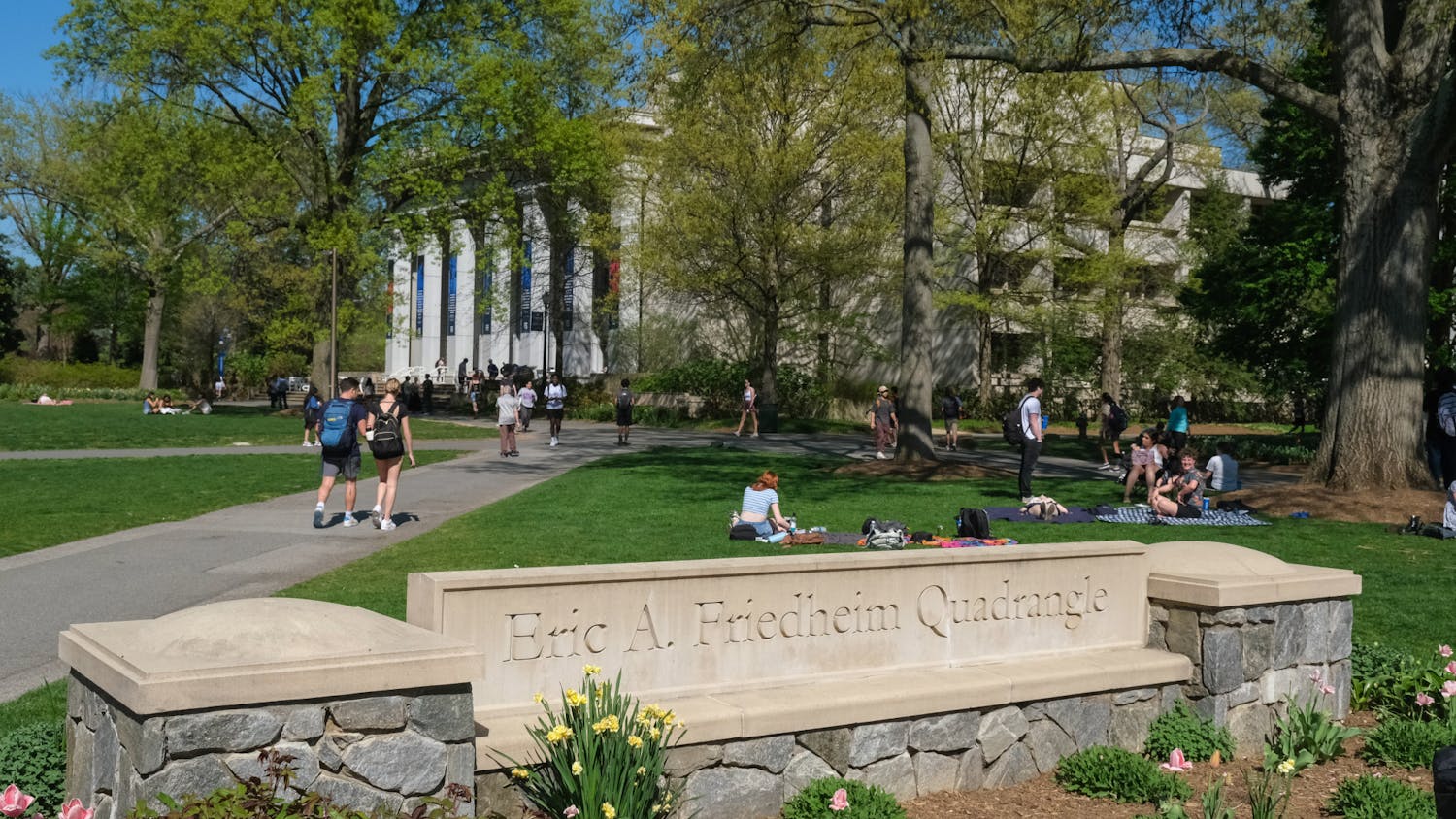From the Newsstands: This story appeared in The Eagle's November 2022 print edition. You can find the digital version here.
On college campuses across the United States, the words “game day” strike like a bolt of lightning. As Vince Young, Pete Maravich, Reggie Bush, Cam Newton, JJ Redick and more demonstrated, some of the most electrifying athletes to ever grace the airwaves did so only as long as they were passing their classes and steering clear of fraternity parties.
So where are the tailgates, the ESPN College GameDay broadcasts and the whiteouts at AU?
AU sponsors 14 NCAA Division I sports, all of which compete in the Patriot League. The Patriot League is not a “power five” conference, a designation given only to the ACC, SEC, Big Ten, Big 12 and PAC-12 conferences. These five are by far the biggest earners in all of college sports, predominantly due to their sponsorship of football.
Some of these “power five” schools face scrutiny for essentially operating as football programs masquerading as academic institutions. AU, a member of the financially-dwarfed Patriot League, does not even field a football team.
Big Ten’s Ohio State University spent $220.6 million on athletics in 2019 to sponsor 36 varsity sports, according to Yahoo Sports. This means each sport on average receives about $6.1 million in funding, although sports like men’s football and basketball in practice receive a far larger share of the funding. Compare this to AU’s reported $15 million total sports budget and the discrepancy becomes clear — each of Ohio State’s 36 sports receives over a third of AU’s total sports budget in funding.
School of Communication sophomore Lucas Torregrossa enjoys attending AU basketball, volleyball and lacrosse games, but said the student body’s attitude towards AU sports is “not good.”
“I don’t even know if it’s about our school’s performance in sports, more so just general disinterest in sports from the student body,” said Torregrossa. “Students here have interests other than sports, and I think that causes them to miss out on what AU provides.”
School of Education sophomore Laura Gyan thinks AU and its student body are at a stalemate regarding sports interest.
“I feel like they try,” Gyan said. “[AU] probably think[s] that people aren’t interested in it, so they don’t push it as much as they probably should.”
These beliefs about sports raise a chicken-or-the-egg dilemma between the school and its students. Are students less passionate about sports because sports are not a huge part of AU’s culture? Or are sports not a big part of AU’s culture because students are less passionate?
Freshman Lane Thimmesch, a casual sports-goer, occasionally attends games but prefers when AU incentivizes attendance.
“I’m not really that engaged with the sports here unless there’s an event with something happening,” Thimmesch said.
“I went to a men’s soccer game once because they had a Surfside truck.”
Thimmesch believes the lack of a football team greatly dampens student interest in sports.
“Compared to my other friends ... who go to state schools in Virginia ... their days kind of center around [football]
a lot,” she said. “I feel like the tailgating and the social aspect ... around football is kind of missing here. I don’t personally need it, but I know other people would probably enjoy that.”
Torregrossa agreed.
“I think a football team could be a good start just in getting people into sports in general here,” he said. “Football teams have the whole social reputation that at least my friends and I try to get with the basketball team.”
Torregrossa and Gyan both feel that basketball picks up some of the slack left by the lack of a football team.
“Basketball I feel is more of a social thing,” Torregrossa said. “I’m able to go with my friends more and enjoy that just for the entertainment component.”
Men’s basketball home games attract just 758 fans to the 4,500-seat Bender Arena on average, according to AU’s athletic department. However, this low student turnout does not necessarily indicate a lack of die-hard fans. One of the most public AU basketball fans is sportswriter and alum David Aldridge, who broadcasts “AU Eagles fan” in his Twitter bio to his nearly 700,000 followers.
Even with a football team off of the table, AU can still bolster student interest in sports. The women’s basketball team’s recent appearance in the NCAA tournament is certainly a start, because as students like Torregrossa and Gyan pointed out, basketball is the most social of AU’s sports. However, the women’s team aver- aged just 400 fans in attendance per home game despite hugely outperforming the men’s team in their respective conferences. The men’s team making the NCAA tournament for the first time since 2014 would certainly grow interest, especially considering how the men’s tournament is nationally televised.
For the foreseeable future, AU will not sponsor a football team, so whether the basketball team can pick up that slack similar to other football-less schools remains to be seen.
But maybe cultivating a sports culture just isn’t on the agenda at AU. “Some people don’t care about [a sports culture],” Gyan said. “I don’t care as much, so that’s why I came here."





